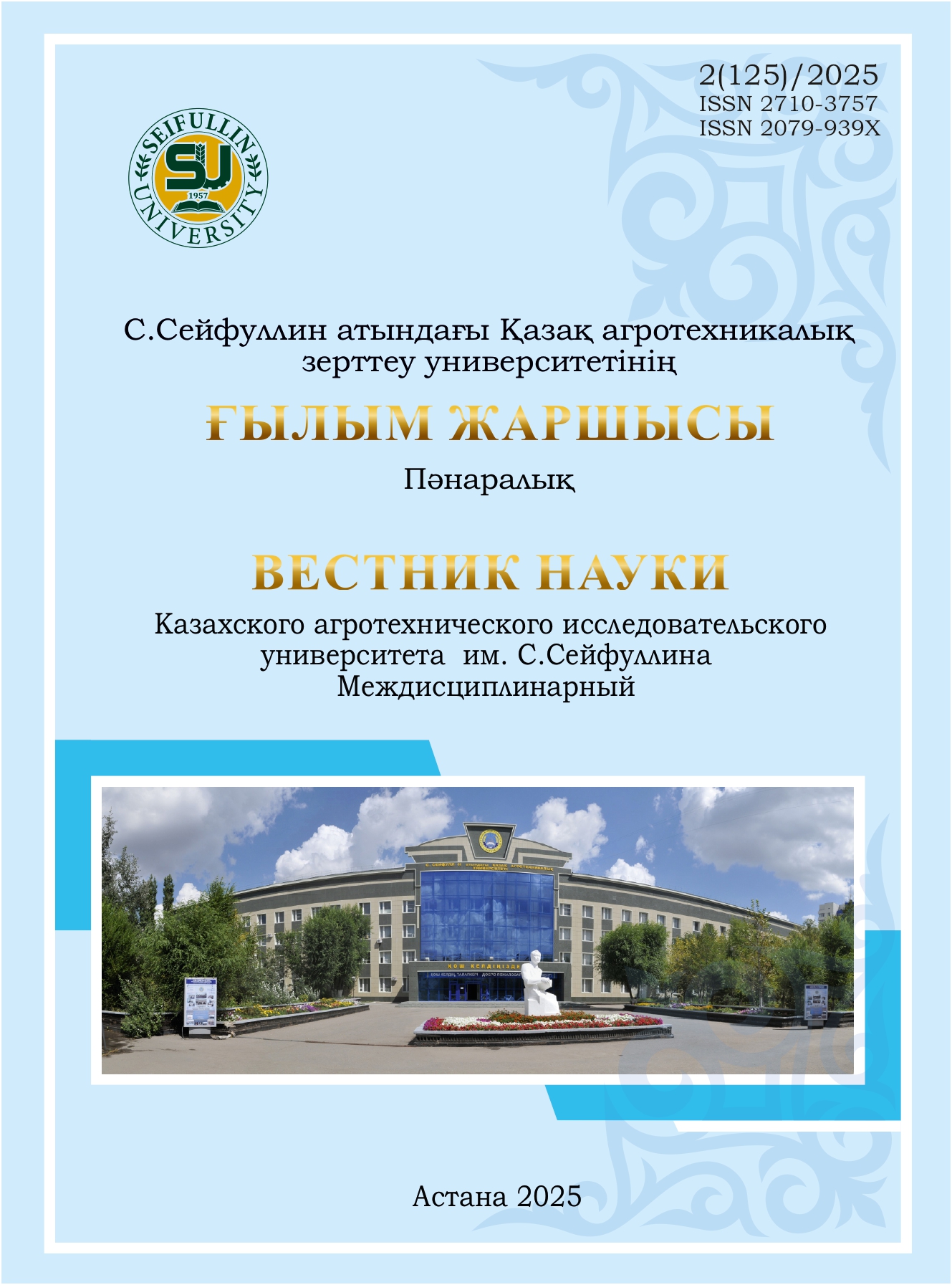Comparative assessment of new varieties and breeding lines of potatoes with pigmented tuber flesh in the conditions of Kostanay region
DOI:
https://doi.org/10.51452/kazatu.2025.2(125).1882Keywords:
potato; tuber; starch; pigmented flesh; variety; breeding lines.Abstract
Background and Aim. This article presents the results of variety testing of domestic and foreign potato breeding material at the “Terra farm”, a potato-growing enterprise of the Kostanay region. Establishing a virus-free collection and developing planting material can serve as a successful starting point for introducing colored potatoes into the breeding and primary seed production of potatoes in Kazakhstan. This would provide a ready-made solution for subsequent commercialization. The purpose of this research is to evaluate potato varieties and hybrids with pigmented flesh from domestic and foreign breeding programs in the Kostanay region and identify promising potato samples.
Materials and Methods. The phenological observations, virus infection assessment, yield accounting and structure, starch content, dry matter content, and vitamin C content for 2024 are presented.
Results. High yields were recorded for the Columba potato variety (57 t/ha) and the breeding line 18-7-1 (54 t/ha). Olyushka, with a yield of 32,4 t/ha, exceeded the Red Rose (St) colored pulp variety by 4,6 t/ha, but was inferior to the Kira (St) variety by 2,1 t/ha. The purple–fleshed varieties Black Beauty and Xisen 8 had the lowest yields at 17,0 t/ha and 16,1 t/ha, respectively, significantly below the standard varieties in their ripeness groups: Gala (49,9 t/ha) and Red Rose (27,8 t/ha). Potato varieties Kira, Black Beauty, Gala, Columba, Xisen 1, Xisen 6 and breeding lines 18-7-1 and Olyushka were characterized by high marketability (99-100 %) and minimal waste genera-tion. The Travnik variety with colored pulp showed the highest amount of starch (17,71 %) followed by 18-7-1(17,46 %). The lowest starch content was found in breeding lines Olyushka and Tanyusha and in varieties Black Beauty, Xisen 6, Xisen 1,and Gala (9,88-12,73 %).
Conclusion. The Xisen 1 variety and the Olyushka breeding line showed the greatest potential under the soil and climatic conditions of 2024 in the Kostanay region, based on a combination of indicators: productivity, tuber marketability, vitamin C content and low starch content. The Travnik variety and 18-7-1 breeding line were characterized by a high content of dry matter and starch.

